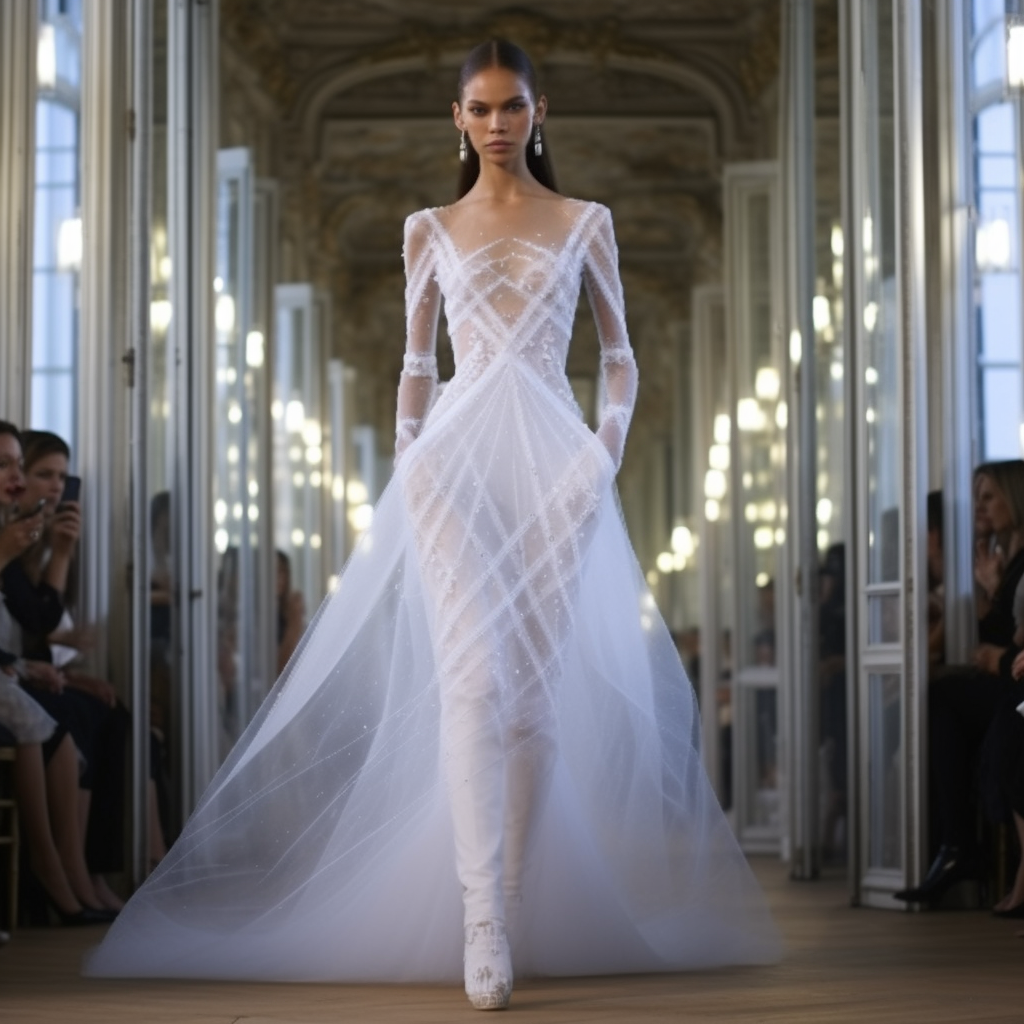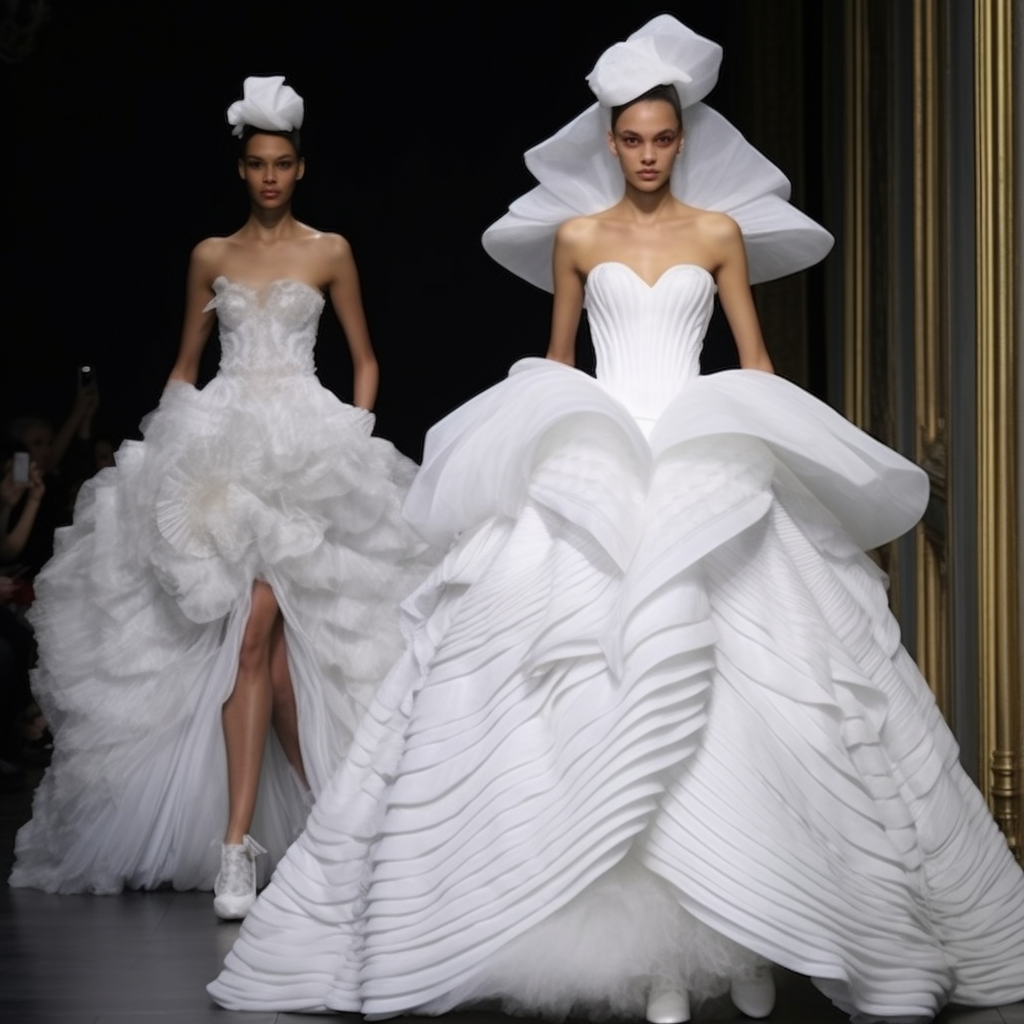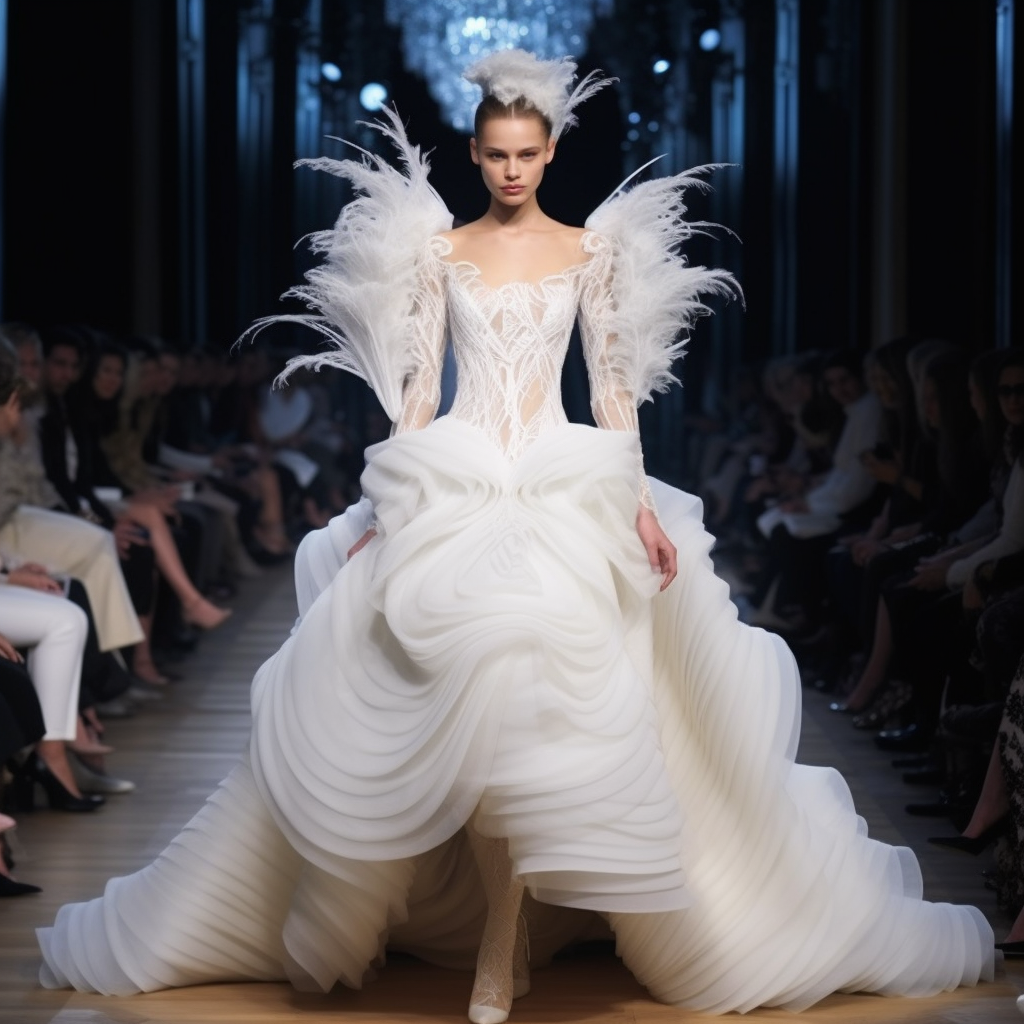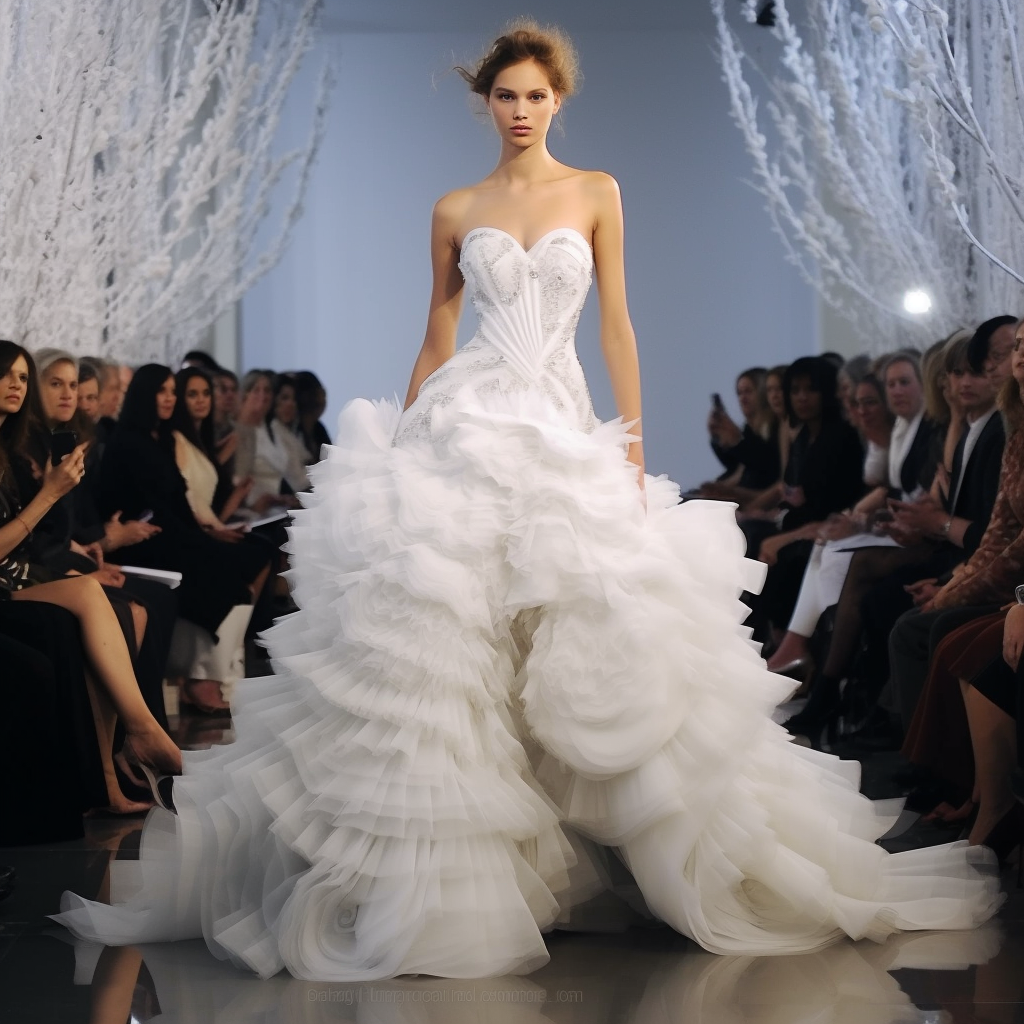1. Introduction to Wedding Dress Fabrics
In the magical world of weddings, the wedding dress stands out as a symbol of love, commitment, and the personal style of the bride. The fabric of the wedding dress plays a significant role in enhancing the beauty of the bride and the overall ambiance of the wedding.
In this chapter, we embark on a journey to understand various wedding dress fabrics. This comprehensive guide will enable brides to make an informed decision while choosing their dream wedding dress.
Table 1: Common Wedding Dress Fabrics
| Fabric | Characteristic | Ideal Style |
|---|---|---|
| Silk | Luxurious and lustrous | Traditional |
| Satin | Shiny and smooth | Any style |
| Lace | Delicate and romantic | Vintage |
| Chiffon | Lightweight and sheer | Beach wedding |
| Tulle | Net-like and airy | Ballgown |
| Organza | Crisp and transparent | Structured silhouette |
| Crepe | Soft and crinkled | Modern and minimalist |
| Velvet | Rich and plush | Winter wedding |
2: Silk: The Classic Wedding Fabric
A timeless favorite, silk is a natural fiber known for its elegance, comfort, and durability. It’s a versatile fabric that lends itself to various styles, from traditional to modern silhouettes.
2.1 Types of Silk
Silk comes in various forms, including:
| Type | Characteristics |
|---|---|
| Dupioni | Slightly wrinkled texture, lustrous |
| Charmeuse | Soft, shiny, drapes well |
| Shantung | Rough texture, subtle sheen |
| Taffeta | Smooth, crisp, with a slight sheen |
2.2 Advantages and Disadvantages
Advantages:
- Luxurious look and feel
- Breathable and hypoallergenic
- Durable and maintains shape
Disadvantages:
- Can be expensive
- Prone to wrinkling and staining
- Requires professional cleaning
2.3 Popular Styles
Silk wedding dresses come in various styles, including A-line, mermaid, and trumpet styles. The natural drape of silk makes it suitable for flowing designs, such as Grecian-style dresses.

3: Satin: The Versatile Option
Satin is not a fiber but a type of fabric weave. It can be made from various fibers, including silk, nylon, or polyester, resulting in a glossy surface and a dull back.
3.1 What is Satin?
The primary characteristic of satin is its glossy sheen, which gives a luxurious feel to the wedding dress. The fabric’s smoothness and slight stretch make it a versatile choice for different dress styles.
| Type | Characteristics |
|---|---|
| Duchesse Satin | Blend of silk and rayon, less shiny than pure silk satin |
| Charmeuse Satin | Lightweight, soft, semi-lustrous sheen |
| Crepe Satin | Slight crinkled texture, soft sheen |
3.2 Advantages and Disadvantages
Advantages:
- Versatile and molds to the body
- Provides structure to the dress
- Available in various weights and sheen
Disadvantages:
- Can show sweat and stains
- Prone to snagging and pilling
- Heavy satin can be hot for summer weddings
3.3 Popular Styles
Satin is ideal for structured designs, such as ball gowns, mermaid dresses, and A-line dresses. The fabric’s smooth surface beautifully shows off the dress’s architectural details.
4: Lace: The Traditional Choice
Lace, the epitome of romance and femininity, is a timeless choice for wedding dresses. It adds a touch of elegance and sophistication to any design, from full lace gowns to lace accents.
4.1 Types of Lace
Lace comes in a variety of styles, each offering a unique look and feel:
| Type | Characteristics |
|---|---|
| Chantilly | Detailed, intricate patterns, soft to touch |
| Alençon | Embroidered with cord for a raised effect |
| Venise | Heavy, textured patterns, ideal for winter weddings |
| Guipure | Large, interconnected patterns, less delicate |
4.2 Advantages and Disadvantages
Advantages:
- Adds visual interest and detail
- Suitable for both traditional and modern styles
- Various types for different looks
Disadvantages:
- Can be expensive, especially hand-made lace
- Delicate and prone to snagging
- May itch or irritate the skin
4.3 Popular Styles
Lace is suitable for any dress silhouette. Full lace gowns are a classic choice, while lace accents on the bodice or hem add a romantic touch.
5: Chiffon: Lightweight Elegance
Chiffon is a lightweight, sheer fabric that drapes well, making it a popular choice for beach or summer weddings. Its floaty nature gives a soft, ethereal look to wedding dresses.
5.1 Characteristics of Chiffon
| Attribute | Description |
|---|---|
| Weight | Very light |
| Texture | Smooth and slightly rough to touch |
| Sheerness | Semi-transparent |
5.2 Advantages and Disadvantages
Advantages:
- Lightweight and breathable
- Drapes well and flows with movement
- Offers a soft, feminine look
Disadvantages:
- Prone to fraying and snagging
- Shows sweat and stains easily
- Requires careful handling and cleaning
5.3 Popular Styles
Chiffon is ideal for flowy styles, such as empire waist and A-line dresses. It’s also commonly used for overlays, sleeves, and wraps.

6: Tulle: The Ballerina’s Dream
Tulle is a net-like, sheer fabric often used for skirts and veils. It adds volume without adding weight, making it perfect for creating the dreamy “ballerina” look.
6.1 What is Tulle?
Tulle is a mesh-like fabric that can be made from various fibers, including silk, nylon, and polyester. Its most common use in wedding dresses is in skirts, providing a fairytale, princess-like feel.
| Attribute | Description |
|---|---|
| Weight | Very light |
| Texture | Net-like, can be rough or soft depending on the weave |
| Sheerness | Semi-transparent |
6.2 Advantages and Disadvantages
Advantages:
- Light and airy
- Adds volume without weight
- Versatile – can be layered or used as an accent
Disadvantages:
- Can appear too “puffy” if overused
- Prone to tearing and snagging
- Can feel scratchy against the skin
6.3 Popular Styles
Tulle is often used in ballgown and A-line dresses to add volume to the skirt. It’s also popular for veils and overlays due to its sheer, floaty nature.
7: Organza: The Crisp Comfort
Organza is a sheer, lightweight fabric known for its crisp texture. Like chiffon and tulle, organza is popular for summer and beach weddings due to its lightness and breathability.
7.1 Features of Organza
| Attribute | Description |
|---|---|
| Weight | Light |
| Texture | Smooth, with a crisp hand |
| Sheerness | Transparent |
7.2 Advantages and Disadvantages
Advantages:
- Lightweight and breathable
- Adds structure without weight
- Offers a shimmery, ethereal look
Disadvantages:
- Prone to fraying and wrinkling
- Can appear too stiff if not handled correctly
- Can be scratchy against the skin
7.3 Popular Styles
Organza is often used for overlays, ruffles, and full skirts. Its stiffness allows for structured designs, such as tiered skirts and puff sleeves.
8: Crepe: The Modern Chic
Crepe is a soft, light fabric known for its crinkled texture. Its elegant drape and matte finish make it a popular choice for modern, minimalist wedding dresses.
8.1 Understanding Crepe
| Attribute | Description |
|---|---|
| Weight | Light to medium |
| Texture | Crinkled, pebbly surface |
| Sheerness | Generally opaque |
8.2 Advantages and Disadvantages
Advantages:
- Drapes well and hugs the body
- Suitable for all seasons
- Provides a modern, sophisticated look
Disadvantages:
- Can show sweat and stains easily
- Prone to wrinkling
- May feel rough against the skin
8.3 Popular Styles
Crepe is perfect for sheath and mermaid dresses, as it closely follows the body’s contours. It’s also suitable for structured designs like jumpsuits and tailored suits.
9: Velvet: The Luxurious Touch
Velvet is a plush, rich fabric that adds a touch of luxury and warmth. It’s especially suitable for winter weddings or formal evening affairs.
9.1 Understanding Velvet
| Attribute | Description |
|---|---|
| Weight | Heavy |
| Texture | Soft, smooth, and plush |
| Sheerness | Opaque |
9.2 Advantages and Disadvantages
Advantages:
- Rich, luxurious feel
- Provides warmth, suitable for cold weather
- Works well with jewel tones
Disadvantages:
- Can be heavy and hot for summer weddings
- Shows wear and tear easily
- Requires professional cleaning
9.3 Popular Styles
Velvet is often used for structured dresses, such as mermaid or trumpet styles. It’s also popular for accents like belts, gloves, and capes.
10: Factors to Consider While Choosing Your Wedding Dress Fabric
Choosing the right fabric for your wedding dress depends on various factors. Here are some aspects to keep in mind:
| Consideration | Description |
|---|---|
| Wedding Season | Lighter fabrics like chiffon and tulle for summer, heavier fabrics like satin and velvet for winter |
| Dress Style | Structured styles require fabrics like satin or taffeta, flowy styles work well with chiffon or silk |
| Venue | For outdoor venues or beach weddings, consider lightweight, breathable fabrics |
| Comfort | Choose a fabric that feels good against your skin. If you’re sensitive, avoid fabrics that may itch or irritate, like some laces or tulles |
| Budget | Natural fibers like silk tend to be more expensive than synthetic ones like polyester |

Your wedding dress is much more than just a beautiful piece of clothing. It’s a symbol of your unique style, personality, and the love story you’re celebrating. The fabric you choose for your wedding dress plays a crucial role in ensuring you look and feel your best on this special day.
From the classic elegance of silk to the romantic charm of lace, the versatility of satin to the modern chic of crepe, each fabric offers a distinct aesthetic and feel. Understanding these fabrics, their advantages and disadvantages, and the styles they best suit will help you make an informed decision.
In conclusion, your perfect wedding dress fabric is a personal choice that depends on your wedding details and personal preference. So take the time, do your research, and choose a fabric that truly resonates with you and makes you feel like the best version of yourself on your big day.
Frequently Asked Questions
Q1: How can I decide on the best fabric for my wedding dress?
A: Consider factors like the season and venue of your wedding, your budget, the dress style you want, and your comfort. For instance, if you’re having a beach wedding in summer, lightweight fabrics like chiffon might be a good choice.
Q2: Are natural fabrics better than synthetic ones for wedding dresses?
A: Both have their pros and cons. Natural fabrics like silk are breathable and luxurious, but can be more expensive and require special care. Synthetic fabrics like polyester are durable and affordable, but they may not have the same breathability as natural fibers.
Q3: Can I mix different fabrics in my wedding dress?
A: Absolutely! Many dresses mix fabrics for a unique look, such as a satin bodice with a tulle skirt. It’s a great way to incorporate the advantages of different fabrics into your dress.
Q4: How should I care for my wedding dress after the wedding?
A: It’s generally best to have your wedding dress professionally cleaned soon after the wedding to remove any stains. The cleaning method will depend on the fabric and embellishments of your dress. After cleaning, store it in a cool, dry place.
You may also like
-
Tyler The Creator: Redefining Style and the Rise of the Tyler The Creator Hoodie
-
Experience True Craftsmanship with a Custom Tailor in Bangkok
-
Indian Wedding Outfits That Make You Shine – Explore Bombay Trendz
-
Office to Party: 7 Ready-To-Wear Sarees That Move With Your Day
-
The Meaning Behind Mad Happiness

